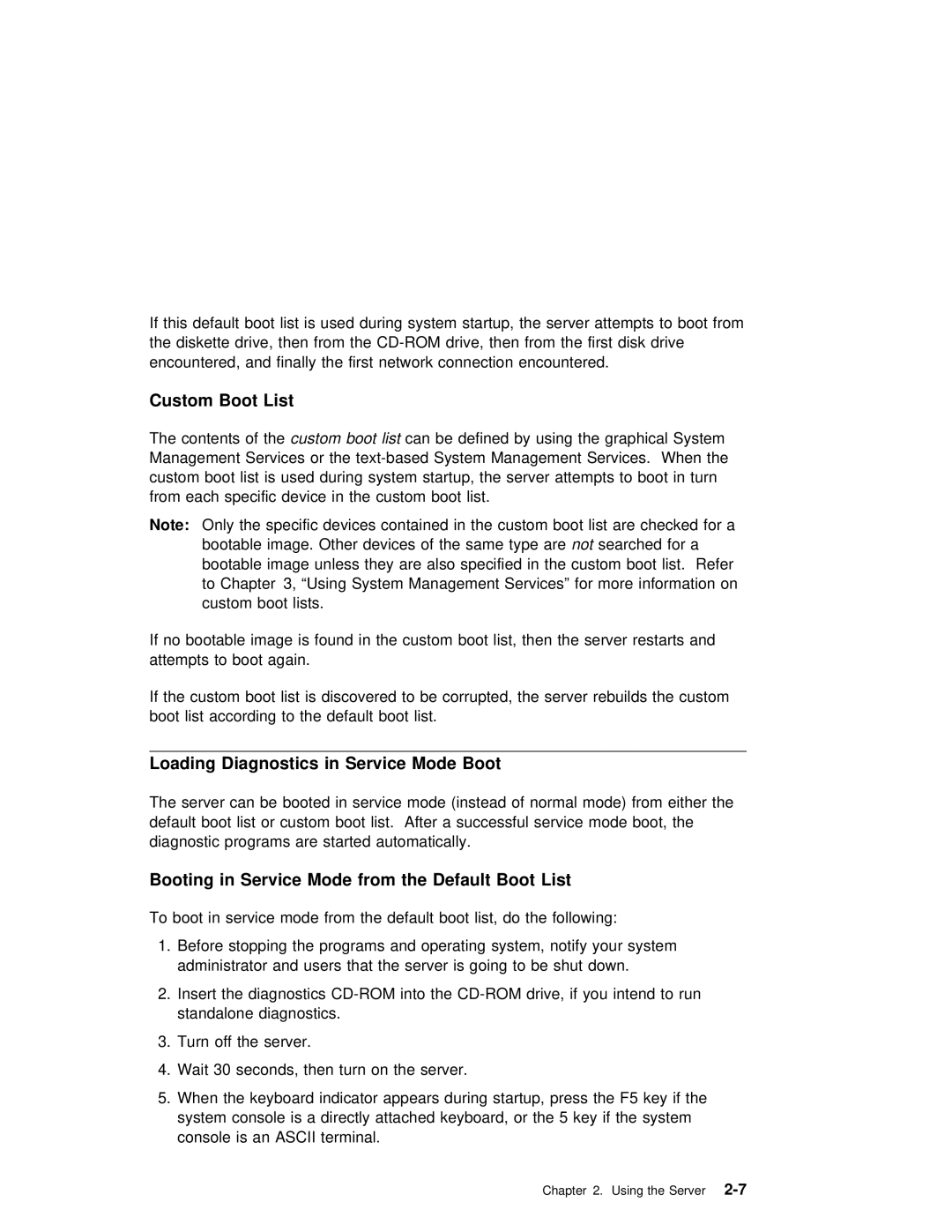If this default boot list is used during system startup, the server attempts t the diskette drive, then from the
Custom | Boot | List |
|
|
|
|
|
|
|
|
|
|
|
|
| |
The contents ofcustomthe | boot listcan be defined | by | using | the graphical | System | |||||||||||
Management | Services | or | the |
| ||||||||||||
custom | boot | list | is | used during system startup, the server | attempts to | boot in | ||||||||||
from | each |
| specific | device | in | the custom | boot | list. |
|
|
|
|
| |||
Note: | Only | the | specific devices | contained | in the custom | boot | list | are | checked f | |||||||
| bootable | image. | Other | devices | of thenot samearchedtype | arefor | a |
|
| |||||||
| bootable | image | unless | they are | also | specified | in | the | custom | boot | list. Ref | |||||
| to Chapter 3, “Using System Management Services” for | more | information | on | ||||||||||||
| custom | boot | lists. |
|
|
|
|
|
|
|
|
|
| |||
If no bootable image is found in the custom boot list, then the server restart attempts to boot again.
If | the | custom boot | list is | discovered | to be corrupted, the server rebuilds t |
boot | list | according | to the | default boot | list. |
Loading Diagnostics in Service Mode Boot
The server can be booted in service mode (instead of normal mode) from either default boot list or custom boot list. After a successful service mode boot, th diagnostic programs are started automatically.
Booting in Service Mode from the Default Boot List
To boot in service mode from the default boot list, do the following:
1. Before stopping the programs and operating system, notify your system administrator and users that the server is going to be shut down.
2.Insert the diagnostics
3.Turn off the server.
4. Wait 30 seconds, then turn on the server.
5.When the keyboard indicator appears during startup, press the F5 key if the system console is a directly attached keyboard, or the 5 key if the syste console is an ASCII terminal.
Chapter 2. Using the
